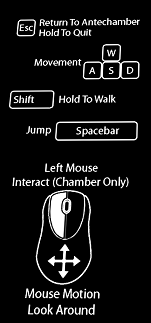


Take this one example: Where the player is at any time can change based on his/her movement - walking forward doesn't necessarily mean the player will progress on a straight line. And worse, the cube has its own completely impossible spatial logic. Journeying around the world and solving puzzles is like tackling the most complicated Rubik's cube ever conceived, but from within the cube. The goal - like other similar games - is to reach the exit, but the various levels, rooms, and passageways don't follow the ordinary rules of spatial reality and can't be navigated in the normal way.

Its spatial puzzles force minds to think outside of the Euclidean geometry box, setting aside a whole pile of assumptions about space we take for granted. The greatest achievement of Antichamber, a first-person puzzle game, is how it breaks free from three-dimensional space. What might a game that does both look like? Feel like? Continue reading Show less To get students really thinking in a more game-focused classroom or after-school setting, pair Antichamber with fellow indie gem Braid, which innovates puzzle design temporally just like Antichamber innovates spatially. In a philosophy class, discuss the "point" of the game, the ending, and the "meaning." Why might breaking down physical and spatial expectations in a game world be important? What does this make players feel? How might the design of the game influence future games? How is it even possible to design a game like this? Getting students to sketch out a "map" of a custom level of Antichamber, especially after they've done similar activities for more traditional games, could be fun and get great discussion going. In a level design or game programming class, explore the ways Antichamber was constructed both at a spatial/architectural level and a coding level. In a math class, explore the history and thinking behind Euclidean geometry, and then get students to detail (as a group or individually) the ways Antichamber deviates from this model.



 0 kommentar(er)
0 kommentar(er)
